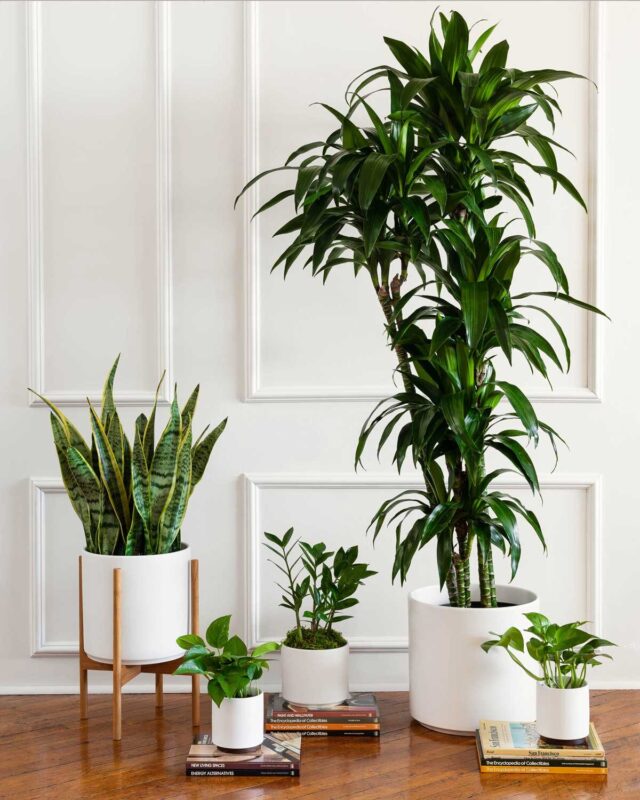Indoor air quality is an essential aspect of a healthy living environment. To enhance the quality of the air inside homes and offices, certain plants have been identified as highly effective. These plants help in filtering pollutants and improving overall air quality. In this log, fifteen top plant choices for indoor air quality will be explored.
1. Spider Plant (Chlorophytum comosum)
The Spider Plant is renowned for its ability to remove toxins such as formaldehyde and xylene from the air. Its easy-care nature and adaptability make it a popular choice for various indoor settings. The plant thrives in indirect light and can tolerate occasional neglect, making it ideal for busy households.
2. Peace Lily (Spathiphyllum)
Peace Lilies are celebrated for their air-purifying qualities, particularly in removing harmful chemicals like benzene, formaldehyde, and trichloroethylene. These plants flourish in low to medium light conditions and require regular watering. Their elegant white blooms add a touch of beauty to any indoor space.
3. Snake Plant (Sansevieria trifasciata)
The Snake Plant, also known as the Mother-in-Law’s Tongue, is noted for its impressive ability to filter out pollutants such as formaldehyde, benzene, and toluene. Its robust nature allows it to thrive in a range of light conditions, from low light to bright, indirect light. The Snake Plant also requires minimal maintenance.
4. Boston Fern (Nephrolepis exaltata)
Boston Ferns are highly effective at removing indoor air pollutants like formaldehyde and xylene. These plants prefer high humidity and indirect light. Regular misting and consistent watering are required to keep the ferns healthy and thriving.
5. Aloe Vera (Aloe barbadensis miller)
Aloe Vera is known not only for its soothing gel but also for its air-purifying properties. It helps in removing formaldehyde and benzene from indoor air. The plant thrives in bright, indirect light and requires minimal watering, making it an excellent choice for various indoor environments.
6. Bamboo Palm (Chamaedorea seifrizii)
The Bamboo Palm is valued for its ability to filter out pollutants such as benzene, formaldehyde, and trichloroethylene. It grows well in low to medium light conditions and requires regular watering. The plant’s feathery foliage adds a tropical feel to indoor spaces.
7. Pothos (Epipremnum aureum)
Pothos, also known as Devil’s Ivy, is renowned for its air-purifying capabilities, particularly in removing formaldehyde, benzene, and xylene. It adapts well to a range of light conditions, from low light to bright, indirect light. Pothos is a low-maintenance plant that can also be grown in water.
8. Rubber Plant (Ficus elastica)
The Rubber Plant is effective in removing toxins like formaldehyde from indoor air. It thrives in bright, indirect light and requires regular watering. The plant’s large, glossy leaves add a touch of elegance to any room.
9. ZZ Plant (Zamioculcas zamiifolia)
The ZZ Plant is known for its resilience and ability to filter out pollutants such as xylene, toluene, and benzene. It thrives in low to bright, indirect light and requires minimal watering. Its glossy, dark green leaves make it an attractive addition to any indoor space.
10. English Ivy (Hedera helix)
English Ivy is particularly effective at removing airborne mold spores and other pollutants like formaldehyde and benzene. It thrives in moderate to bright, indirect light and requires regular watering. The plant’s trailing vines add a decorative element to indoor spaces.
11. Dracaena (Dracaena spp.)
Various species of Dracaena, including Dracaena marginata and Dracaena fragrans, are known for their air-purifying abilities. They are effective in removing pollutants such as formaldehyde, benzene, and trichloroethylene. Dracaenas prefer bright, indirect light and require moderate watering.
12. Chinese Evergreen (Aglaonema)
Chinese Evergreen is valued for its ability to remove pollutants like formaldehyde and benzene. It thrives in low to medium light conditions and requires regular watering. The plant’s attractive foliage adds color and texture to indoor environments.
13. Areca Palm (Dypsis lutescens)
The Areca Palm is known for its ability to improve indoor humidity levels and remove pollutants like formaldehyde. It grows well in bright, indirect light and requires regular watering. The plant’s feathery, arching fronds create a lush, tropical atmosphere indoors.
14. Parlor Palm (Chamaedorea elegans)
The Parlor Palm is effective at removing indoor air pollutants such as formaldehyde and benzene. It thrives in low to medium light conditions and requires minimal watering. The plant’s elegant fronds add a sophisticated touch to indoor spaces.
15. Gerbera Daisy (Gerbera jamesonii)
Gerbera Daisies are appreciated for their bright, colorful blooms and ability to remove pollutants like formaldehyde. They prefer bright, indirect light and regular watering. The plant’s vibrant flowers can enhance the aesthetic appeal of any indoor environment.
Conclusion
Enhancing indoor air quality can be achieved effectively through the use of specific plants known for their air-purifying properties. The plants listed above offer various benefits, from removing toxins to adding aesthetic value to indoor spaces. By incorporating these plants into home and office environments, individuals can improve their indoor air quality and create a healthier living space.










